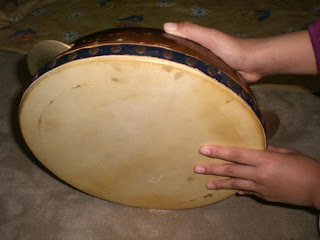
In the past, the differences in wedding ceremony of these ethnic groups were apparent. For example, the ceremony of ''Khatam Qur'an'' was one among the prominent features in a Baweanese wedding celebration. During this ceremony the bride reads the Qur'an, on the ''Pelamin'' for visitors to witness her ability in reciting the Qur'an eloquently. This ceremony is usually followed by ''Marhaban'', the Islamic hymns praising Prophet Muhammad (peace and blessing be upon him), performed by either an all male group or an all female group.

Through the years, like any other ethnic groups in Singapore Malay Community, the wedding celebration among Baweanese, encountered changes as the wedding trends in this community evolves. Slowly, ceremonies such as ''Khatam Qur'an'' and the shared ceremony of the elaborate ''Malam Berinai'' diminishes with time. Today, even the service of Marhaban and Hadrah groups are rarely being used. With the assimilation of wedding cultures due to mix marriages between ethnic groups in the Malay community living in Singapore, the similarities are very close. Differences can only be seen through careful observation on the behaviours, speeches and the way in which the hosts of the wedding celebration present themselves during the occasion, particularly in relations to their clothings and ornaments they wear.

Today, most Baweanese in Singapore share the same wedding cultures with other ethnic groups in the Malay Community. In most cases, it is a big wedding celebration but with simple ceremonies on the wedding day. Guests are invited for a buffet reception throughout the day and simultaneously, to witness the ''Bersanding'' ceremony in which, the bridegroom and his bride, sit side-by-side similar to that of a King and Queen on a throne. Indeed they are the "King and Queen'' throughout the day on their wedding day! In todays context, the ''Bersanding'' ceremony is a time for photo session with relatives and friends. It is the time of opportunity for these guests to congratulate the newly wed couple with lots of blessings.

Gone were the days whereby a wedding occasion took few days to hold several ceremonies. Among the many ceremonies that were once considered important was the ''Malam Berinai''. In todays context, it is a private photo taking session. Normally, a day before the wedding celebration after going through the ''Aqad Nikah'' session, the bridegroom and his bride became ''models'', wearing different kind of traditional costumes with heavy make-up on their faces and the dye from the ''Inai'' (Hiina) gives the dark reddish-orange colour on their fingers.


The ''Aqad Nikah'' ceremony is usually held among close relatives either at the bride's parental home or at the Shari'ah Magistrate Office. This is a solemnization ceremony that validates the marriage between the bridegroom and his bride to be official. Moments before the ''Aqad Nikah'' begins, the bride will be asked by the ''Qadhi'', the Marriage Officer appointed by the Muslims' Magistrate Office, on her marital status and her standings that the marriage is of her freewill.

(The signing of Marriage Certificate during Solemnization Ceremony)

In the era of 1950s and 1960s, one of the prominent features in a Baweanese wedding celebration in Singapore was the appearance of two little girls serving as bridesmaids. During the ''Bersanding'' ceremony, they could be seen standing beside the bridegroom and his bride with fans on their hands, keeping the newly wed couple cool and comfortable. Such features disappeared slowly as time goes-by.
(The ''Bersanding'' Ceremony during 1950s)

(The ''Bersanding'' Ceremony during 1960s - Notice the two little bridesmaids standing beside the bridegroom and bride.)
Also during this period, the presence of' ''Hadrah'' was important. The Hadrah is a group of people beating the ''Kompang'' while accompanying the bridegroom to the bride's home for the ''Bersanding'' ceremony. Today, in most weddings the beats of ''Kompang'' can only be heard through audio.



Another prominent feature is the carrying of ''Bunga Manggar'' during the ceremony of ''Bertandang''. This is a pole in which at one end, a pineapple fruit is being used to hold a bunch of decorative colourful coconuts leaf veins, taking the shape of an unbrella-like shade. ''Bertandang'' is a ceremony in which the bridegroom and his bride visit the venue of the wedding celebration at both sides.
 (Notice the man holding the ''Bunga Mangar" as he accompanies the bridgrooms going to the bride's home)
(Notice the man holding the ''Bunga Mangar" as he accompanies the bridgrooms going to the bride's home) The ''Pelamin'', ''Bersanding'', ''Bunga Manggar'', ''Bertandang'', ''Hadrah'' and ''Kompang'' are among the shared cultures of wedding celebrations in the Singapore Malay Community. Below are videos showing a glimpse of a Baweanese Wedding in Singapore.
(Present day of ''Bertandang'' in which the bridegroom bring his bride over to the venue of the wedding ceremony held at his side - Notice the ''Bunga Manggar'' carried by the two males accompanying the newly wed couple)
(Upon request from his mum, the Bridegroom is entertaining his guests, singing in a Karaoke session. Nowadays, most wedding celebration in the Singapore Malay Community, Karaoke is a popular choice of entertainment for the guests.)
This post is dedicated to my dear cousin, Mohammad Zahril. May your marriage brings lots of joy and everlasting happiness in your life. Aameen.










.JPG)














